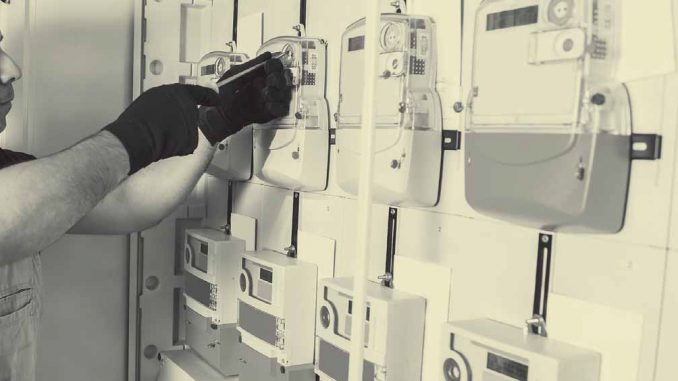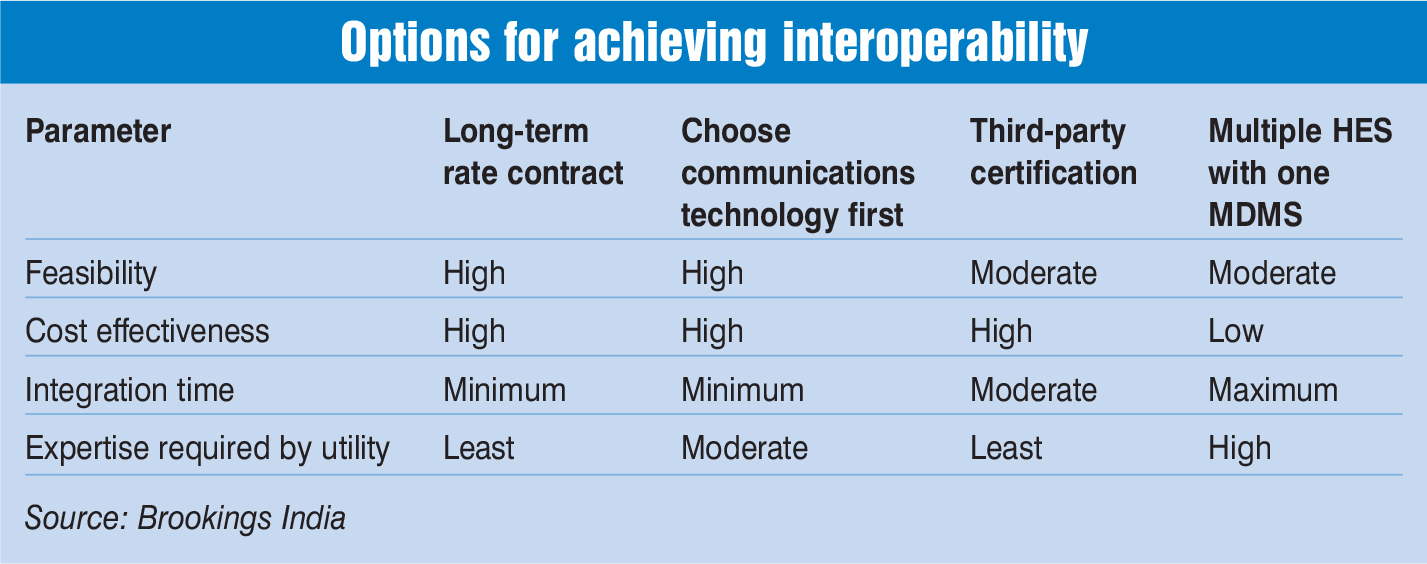
Interoperability is crucial to ensure returns on investment and prevent vendor lock-in of any distributed system consisting of different entities or applications that need to work together to achieve a common objective. Interoperability is even more important in the context of smart grids, where the sheer number of entities that need to work together can be enormous.
As utilities often make use of multiple advanced metering infrastructure (AMI) systems, serviced and produced by different vendors, the use of multiple sets of peer systems can result in a number of challenges, including increased operational requirements within the utility, adding to their management complexity. Files and data in different systems cannot be shared and manual consolidated reports are required. Grid data analysis is not comprehensive enough. There are also increased implementation and maintenance costs.
Interoperability and standards activities ensure that new devices will interoperate in a secure environment as innovative digital technologies are implemented throughout the electricity delivery system. Interoperability and standards activities are, however, not limited to technical information standards; they must be advanced in conjunction with business processes, markets and the regulatory environment. The application domains include automatic meter reading/AMI, demand response, distributed energy resources management, electric transport, cybersecurity and wide area monitoring systems/situational awareness, among others.
Standards on metering
The need for standards arises as there are numerous options with different specifications that are available. Moreover, standards help in setting benchmarks for the same. For instance, for electric vehicle charging infrastructure, the various charging options include standards such as Bharat stage emission standards, GB/T, CHAdeMo, Combined Charging System, etc., which are useful in setting benchmarks across industries.
Similarly, for smart meters, various standards’ specifications cover the design, manufacturing, testing, supply and delivery of smart energy meters. The number of standards has also increased with time. The following are the standards for metering as specified by the CEA:
IS 13779 – AC static watt-hour meters: Classes 1 and 2 specifications.
IS 15959 – data exchange for electricity meter reading, tariff and load control – companion specification.
IS 15884 – AC static direct connected prepayment meters: Classes 1 and 2.
IS 16444 – AC static direct connected watt-hour smart meters: Classes 1 and 2.
 Achieving interoperability
Achieving interoperability
The question is whether interoperability implies just following the standards. The internet is one example that is close to achieving successful interoperability. Its open architecture, resilience (mesh design), end-to-end system and layered system make it close to achieving it. The lesson for smart meters is relevant from the internet’s case as the layers are able to operate independently from others and all that is needed is to put standards in place.
In the smart metering world, attaining interoperability is currently a challenge. The key to smart meters is focusing on communication between systems. Another focus point is areas where standards are currently missing.
There are, in general, two approaches to set a standard. First, defining every step and protocol, after which buyers can pick and choose any vendor for a fungible part. This approach would help in turning products into specific commodities. Second, setting benchmarks as sets of standards (suites) on a pair-wise basis. This approach would lead to multiple choices among standards, for instance, setting a benchmark for a pair of meters to data concentrator units where required. However, this approach turns out to be a complex alternative process as compared to the former. There can also be a mix of the two approaches, depending upon the requirements to overcome each of their disadvantages.
What is required is that the utility be aware of all the options. There are different parameters to be considered before deciding the application method, such as its feasibility, cost effectiveness, integration time and the expertise required by a utility. Integration time is the time required to integrate new smart meters into the utility’s AMI network and is important before selecting in which direction to go. For instance, integration of AMI with other distribution systems is basically the integration of the meter data management system with the supervisory control and data acquisition system, OMS, GIS, etc., where the IEC 61968 standard will be applicable.
 Challenges and the way forward
Challenges and the way forward
A key issue is how to break hardware services from software services. A lesson from Wi-Fi was that it started from a price of $1,000 for 2 Mbps and, today, it is almost free and what one pays for are enterprise solutions such as access control and security. This is currently lacking in smart meters.
Further, many specifications are not limited or restricted by standards, as for any choice there is a standard that can be followed. The challenges arise in terms of communication synergies with other networks, frequency of uploading and requirement of hourly readings, among others. The process also requires technical as well as process intelligence in order to identify what needs to be stored in the cloud for a transparent data protocol.
While aiming to achieve successful interoperability, there is also a need to consider whether it can be achieved in net metering as well as solar panels, apart from smart meters. Along with the available standards at the product level, there is a need to think whether standards are required for consumer bills as well.
The road ahead will depend on open international standards to be applied at the interfaces of all communicating entities and applications. According to industry experts, it is recommended that a detailed study of the interoperability standards be carried out and that it should focus on the interoperability test definitions. The study should be able to check for the presence of interoperability test definitions, test tools and certifying authorities, and explore the possibility of creating authorised test laboratories for each of the standards within India.
